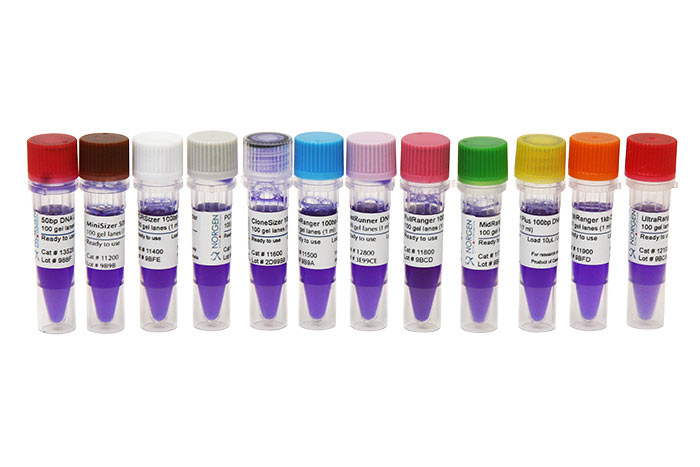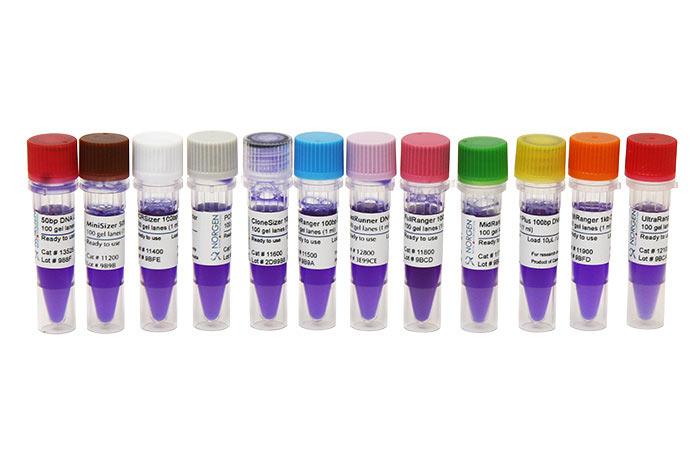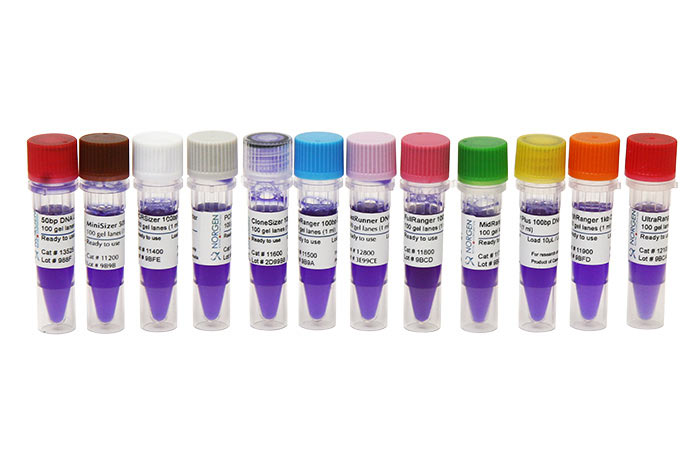Plasmid DNA Kits
For rapid and convenient plasmid DNA preparations
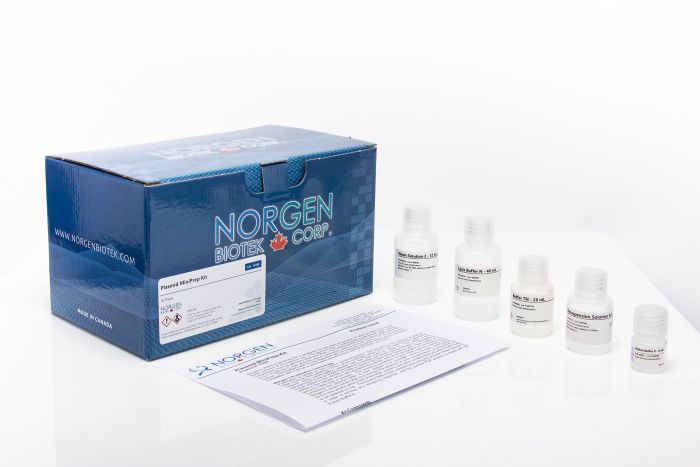
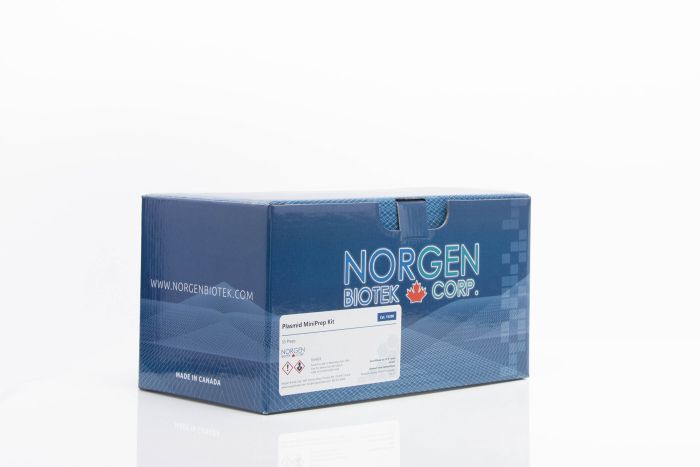
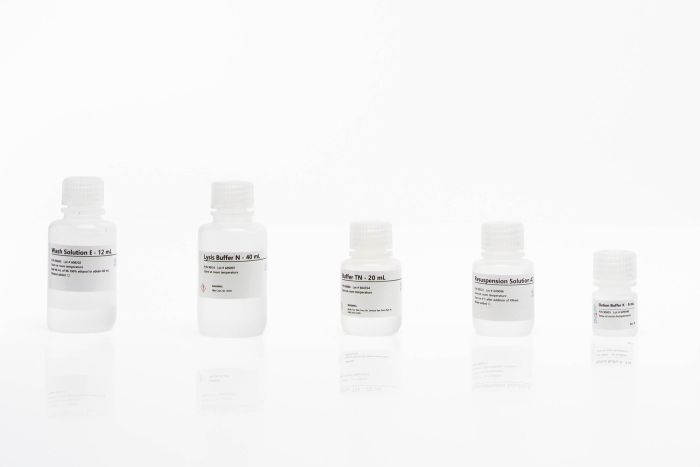
For research use only and NOT intended for in vitro diagnostics.
Plasmid DNA Kits
For rapid and convenient plasmid DNA preparations
Register today to receive an exclusive 15% off* on your first order.
Features and Benefits
- Isolate high quality, high yield plasmid DNA
- Plasmid DNA is ready for various downstream applications including restriction digestion, bacterial transformation, sequencing and more
- Available in 4 formats: MiniPrep, MiniPrep (Magnetic Bead System), 96-Well MiniPrep (Magnetic Bead System), and MaxiPrep
These kits are designed for the rapid preparation of plasmid DNA from Escherichia coli.
Plasmid MiniPrep Kit
This kit is designed for the rapid preparation of plasmid DNA from small cultures of Escherichia coli using convenient spin columns. The plasmid DNA is preferentially purified from other cellular components such as genomic DNA and RNA. This kit is able to purify plasmids up to 13,000 bp in size, and the typical purification yield is up to 20 μg from 1.5 mL of bacterial culture. Purified DNA is of excellent quality for transformation, restriction enzyme digestion, sequencing and more. Also available in a 96-well format.
Plasmid MiniPrep Kit (Magnetic Bead System and High Throughput Magnetic Bead System)
Norgen's Plasmid MiniPrep Kit (Magnetic Bead System) is designed for the rapid preparation of plasmid DNA from small batch cultures of Escherichia coli. Norgen’s magnetic beads bind DNA under optimized salt concentrations and release the bound DNA under low salt and slightly alkali conditions. The plasmid DNA is preferentially purified from other cellular components such as genomic DNA and RNA. The purified plasmids are fully digestible with all restriction enzymes tested, and are completely compatible with real-time PCR and NGS.
Norgen's Plasmid MiniPrep Kit (Magnetic Bead System) is also available in a 96-well (HT) format for high throughput applications. Purification with the 96-well plates can be integrated with a robotic automation system.
Plasmid MaxiPrep Kit
This kit is designed for the rapid spin column preparation of plasmid DNA from up to 100 mL of Escherichia coli cultures. The kit allows for the isolation of plasmid DNA with final endotoxin levels of 0.1 EU/µg of DNA or less. The kit is able to purify plasmids up to 13,000 bp in size, and typical yields from a 100 mL culture for a high copy number plasmid are between 0.4 and 1.0 mg. The purified DNA is fully digestible with all restriction enzymes tested, and is completely compatible with manual or automated sequencing to achieve 95-100% accuracy.
Details
Supporting Data
Figure 1. High DNA Yield from Small Cultures. Plasmid DNA from 1 mL overnight bacterial cultures was prepared with Norgen’s Plasmid MiniPrep Kit and compared with two other commercial kits. The purifications were performed in triplicate, and the average yield for each kit is shown in the graph. The quantification of the DNA yield was performed by resolving 5 µL of the 50 µL of eluted DNA on a 1X TAE, 0.9% agarose gel followed by densitometry. Norgen shows a significantly higher average yield than the other 2 competitor’s kits.
Figure 2. High-Accuracy Sequencing. One microgram of plasmid DNA purified by Norgen’s Plasmid Miniprep DNA Kit was used as a template in an Applied Biosystem DNA Sequencer. The result showed an accuracy of >99% over a 950 bp contiguous sequence.
Figure 3. High Quality of Plasmid DNA. Resolution of plasmid DNA isolated from E. coli (1 mL) using Norgen’s Plasmid MiniPrep Kit (Magnetic Bead System). For evaluation, 10 µL from 50 µL of elution were digested with the restriction enzyme, EcoR I and run on 1X TAE 1.3% agarose gel. All plasmid DNA isolated were digestible, indicating the high quality of plasmid DNA. Marker = Norgen’s HighRanger DNA Ladder.
Figure 4. High DNA Yield from 150 mL Cultures. Plasmid DNA from 150 mL bacterial cultures grown overnight was prepared with Norgen’s Plasmid DNA MaxiPrep Kit and compared with two other commercial kits. The purifications were performed in triplicate, and the average yield for each kit is shown in the graph. The quantification of the DNA yield was performed by resolving 5 µL of the 2 mL of eluted DNA on a 1X TAE, 0.9% agarose gel followed by densitometry. Norgen’s kit shows a significantly higher average yield than the other 2 competitor’s kits.
Figure 5. Full Compatibility with Digests. DNA isolated with Norgen’s Plasmid DNA MaxiPrep Kit is easily digestible, often requiring less than 1 hour for full digestion. One microgram of a 9,309 bp plasmid purified by Norgen’s DNA MaxiPrep Kit was digested for one hour at 37oC in a 20 µL reaction with 2 units of BamHI (Lane 2), HindIII (Lane 3), and SmaI (Lane 4). The entire reaction was loaded on a 1X TAE, 0.9% agarose gel. Lane 1 is uncut plasmid, and Lane M is the Norgen UltraRanger 1kb DNA Ladder
|
Kit Specifications
|
|
| Column Binding Capacity |
25 µg
|
| Size of Plasmids Purified |
Up to 13,000 bp
|
| Average Yield from 1.5 mL of Culture |
Up to 20 µg
|
| Time to Complete 10 Purifications |
30 minutes
|
Storage Conditions and Product Stability
All solutions should be kept tightly sealed and stored at room temperature. This kit is stable for 1 year after the of shipment. The RNase should be stored at -20°C upon arrival. The Resuspension Solution AZ should be stored at 4oC upon addition of RNase enzyme.
| Component | Cat. 13300 (50 preps) | Cat. 46400 (250 preps) | Cat. 46500 (4 preps) | Cat. 46600 (20 preps) | Cat. 60300 (50 preps) | Cat. 63000 (192 preps) |
|---|---|---|---|---|---|---|
| Resuspension Solution AZ | 12 mL | 60 mL | 20 mL | 100 mL | 12 mL | 2 x 20 mL |
| Lysis Buffer N | 40 mL | 80 mL | 40 mL | 2 x 80 mL | 40 mL | 2 x 40 mL |
| Buffer TN | 20 mL | 130 mL | 55 mL | 2 x 130 mL | 20 mL | 1 x 55 mL 1 x 20 mL |
| Wash Solution E | 12 mL | 2 x 18 mL | - | - | - | - |
| Elution Buffer K | 8 mL | 30 mL | - | - | 8 mL | 2 x 8 mL |
| Wash Solution J | - | - | 25 mL | 3 x 25 mL | - | - |
| Elution Buffer J | - | - | 24 mL | 120 mL | - | - |
| RNase A | 1 vial | 1 vial | 1 vial | 1 vial | 1 vial | 1 vial |
| Magnetic Bead Suspension | - | - | - | - | 1 x 1.1 mL | 4 x 1.1 mL |
| Spin Columns | 50 | 250 | - | - | - | - |
| Collection Tubes | 50 | 250 | - | - | - | - |
| DNA Maxi Spin Columns with Collection Tubes (Clear ring in column) | - | - | 4 | 20 | - | - |
| Maxi Spin Filter Columns with Collection Tubes (Grey ring in column) | - | - | 4 | 20 | - | - |
| 96-Well Plate | - | - | - | - | - | 2 |
| Elution Tubes (1.7 mL) | 50 | 250 | - | - | 50 | - |
| Elution Tubes (50 mL) | - | - | 4 | 20 | ||
| 96-Well Elution Plate | - | - | - | - | - | 2 |
| Adhesive Tape | - | - | - | - | - | 2 |
| Product Insert | 1 | 1 | 1 | 1 | 1 | 1 |
Documentation
(46400) Plasmid MiniPrep Kit - (250 prep)
(46500) Plasmid DNA MaxiPrep Kit - Protocol (4 prep)
(46600) Plasmid DNA MaxiPrep Kit - Protocol (20 prep)
(60300) Plasmid MiniPrep Kit (Magnetic Bead System) - Protocol (50 prep)
(63000) Plasmid MiniPrep 96-Well Kit (High Throughput Magnetic Bead System) - Protocol (2 x 96-well)
FAQs
MiniPrep, MiniPrep Magnetic Bead System, High Throughput MiniPrep Magnetic Bead System, MaxiPrep
Poor DNA recovery could be due to one or more of the following:
- Plasmid did not propagate.
Ensure that the appropriate growth medium, supplements, and antibiotics were used for the host cell and plasmid of interest.
- Inoculum cell culture was old.
Old bacterial cells are a poor source of plasmid DNA. Bacterial cell inoculum should be prepared from fresh single colonies, grown in a test tube overnight, and immediately used for inoculum preparation. Prolonged incubation or storage of culture in the fridge almost guarantees poor results.
- Insufficient lysis of cells.
The Lysis Buffer N may have formed precipitates. Warm and mix gently before use.
- Cell resuspension was incomplete.
Pelleted cells should be completely resuspended in the Resuspension Solution AZ. Do not add Lysis Buffer N until a homogeneous suspension is obtained.
- Elution Buffer was not placed directly over the column’s membrane.
It is important that the Elution Buffer be placed directly over the column’s membrane to ensure uniform passing of the buffer through the column. Do not pipette the Elution Buffer K onto the side of the column.
- Proper Elution Buffer was not used.
The provided Elution Buffer has been optimized for high elution recoveries for respective plasmid DNA isolation kits. If water is used, ensure that the pH is between 7 and 8.
If the DNA does not perform well in downstream applications, it may be due to one or more of the following:
- Bound DNA was not washed properly.
Traces of salt from the binding step may remain in the sample if the column is not washed with Wash Buffer E (for miniprep) or Wash Buffer J (for maxiprep) / magnetic beads are not washed with 70% ethanol (freshly prepared). Salt may interfere with downstream applications and thus must be washed from the magnetic beads.
- Dry spin not performed.
The dry spin must be performed after the wash step in order to remove all traces of ethanol.
- The appropriate amount of ethanol was not added to the Wash Solution E / Wash Solution J.
The Wash Solution E (miniprep) / Wash Solution J (maxiprep) has been specifically designed to contain the appropriate amount of components. Ensure that the Wash Solution was prepared using the correct amount of ethanol.
- A different elution buffer was used.
If a different elution buffer other than the one provided in the kit was used, the buffer should be checked for any components that may interfere with the application. Common components that are known to interfere are high salts (including EDTA), detergents, and other denaturants. Check the compatibility of your elution buffer with the intended use.
Citations
| Title | Antimicrobial resistance genetic determinants and susceptibility profile of Pseudomonas aeruginosa isolated from clinical samples in a tertiary hospital in Ogun State, Nigeria |
| Citation | Transactions of The Royal Society of Tropical Medicine and Hygiene 2024. |
| Authors | Oluwatoyin Olawunmi Adeyelu, Edidiong Nkiruka Essien, Valentine Adebote, Abraham Ajayi, Utibeima Udo Essiet, Adeyemi Isaac Adeleye, Stella Ifeanyi Smith |
| Title | Antibiotic Resistance and Plasmid Replicon Types of Non-Typhoidal Salmonella Serovars Isolated From Food Animals and Humans in Lagos, Nigeria |
| Citation | Microbiology Insights 2023. |
| Authors | Folake Latifat Adedokun, Abraham Ajayi, Utibeima Udo Essiet, Oyin Oduyebo, Adeyemi Isaac Adeleye & Stella Ifeanyi Smith |
| Title | Effectiveness of a novel gene nanotherapy based on putrescine for cancer treatment† |
| Citation | Biomaterials science 2023. |
| Authors | Saínza Lores, Manuel Gámez-Chiachio, María Cascallar, Carmen Ramos-Nebot, Pablo Hurtado, Sandra Alijas, Rafael López López, Roberto Piñeiro, Gema Moreno-Bueno and María de la Fuente |
| Title | Isolation of plasmid genes in eye swabs of babies delivered through spontaneous vaginal deliveries and caesarian section |
| Citation | Journal of the Nigerian Optometric Association 2023. |
| Authors | Hypolytus Chinonso Muoneke; Philips Ifeanyichukwu Ebisike ;Bosede Olajire Ajayi ;Sadiq Hassan ;Saudat Garba Habib ;George Atuanya ;Eme Okpo ;Pedro Shamsudeen Lekan ;Dorayi Sani Umar |
| Title | Antimicrobial Resistance Profiles of Listeria monocytogenes and Listeria innocua Isolated from Ready-to-Eat Products of Animal Origin in Spain |
| Citation | Foodborne Pathogens and Disease 2017. |
| Authors | Escolar, C., Gómez, D., Rota García, M. D. C., Conchello, P., & Herrera, A. (2017). |
| Title | Evaluation of aromatic and polycyclic hydrocarbon degrading abilities of selected bacterial isolates |
| Citation | Journal of Microbiology and Biotechnology Research 2017. |
| Authors | Praveenkumar, D., Priya, E., Nagasathy, A., & Thajuddin, N. (2017) |



